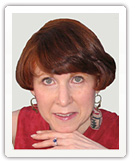e-Tips
How to Use the Intersection of Generations and Gender to Raise the Return for Everyone
Lately I find myself engaged in conversations, mostly raised by Boomers and the older half of Gen Xers about what might be called the intersection of gender and generations issues. Several women expressed the strong belief that women have actually made little or no progress in attaining leadership and management positions in the last 10 years except in their own businesses.
At least a few women who talked with me believe that as a society we have adopted the habits of politically correct speech, and that has swept true attitudes under the rug and made it seem like women have reached a greater degree of equality in the corporate environment and media treatment than they actually have. They believe that we as a society have actually regressed. The other “symptom,” if you will, is that having made some visible strides, men act as if the gap problem is solved, and there is less talk leading to action than there used to be.
On the other hand, my inbox continues to be filled with e-newsletters and updates from politically active groups, industry professional organizations and media watchdogs that persistently and energetically keep these issues in the forefront. Perhaps we are not getting the same mail and attending the same meetings?
Yes, I think we still have a long way to go. And I think the best strategy for achieving more success for everyone is to sincerely and substantively involve men in the solutions. Down with lip service. So here is one of the best opportunities to take advantage of the intersection with generational attitudes. The younger generations are not only accepting but also demanding all kinds of diversity. They see gender as less of an issue than their older colleagues do.
Here are my reasons for optimism. (Yes, I am a born optimist, but one that doesn’t like being disappointed.) I emphasize that these are general patterns, not absolutes, and we need to recognize individual situation and avoid stereotypes.
- Gen Y makes smaller gender distinctions as to relationships, capabilities, ambitions, leadership and tenure than older generations do.
- Collaborative styles, which are comfortable for many women, are favored by the younger generations. Collaboration is necessary for solving ever more complex problems.
- With more women making purchasing decisions on the client side, more women and other diverse professionals will be designated to lead client teams and business development opportunities. Economic factors are strong attitude influencers.
- Younger men are about as focused on family (dual-centric) as women are and desirous of restructuring the workplace so it works better for people.
- Women are gradually learning the importance of rainmaking to their careers, the importance of getting sponsors, not just mentors, helping each other and learning to be more confident in negotiations.
- While unconscious bias is still common, a desire for rejuvenating professionalism among all generations (as revealed in the findings of the Practice Development Counsel survey soon to be released) will gradually shrink the gap in leadership and increase opportunities for women. Professionalism will increasingly trump gender biases.
- There is a growing awareness of the value of gender neutrality in producing organizational success.
- Everyone gets older – we can’t stop it – so more people with gender bias will be transitioning out of the workplace.
This is not occurring, and probably will not happen, fast enough to please women and accelerate the success of many businesses. Buy I believe it will happen faster if we take the focus off difference and involve stakeholders of all generations and genders in achieving common goals of productivity, client retention, succession planning and professional excellence.
This is a controversial subject, and we need to give it the attention it deserves. I urge you to send your comments, provocative or not, to me at pwhaserot@pdcounsel.com or comment on our blogwww.nextgeneration-nextdestination.com. Let’s keep a lively dialogue going.
Phyllis
© Phyllis Weiss Haserot, 2011.
Help your colleagues: If you liked this article, please share it with your colleagues and friends, Tweet it Retweet it and “Like” it on your social media. Be sure to include the copyright, © Phyllis Weiss Haserot, 2011 and www.pdcounsel.com.
* The generational chronology for easy reference: Generations are defined by the similar formative influences – social, cultural, political, economic – that existed as the individuals of particular birth cohorts were in adolescent-early adult years. Given that premise, the age breakdowns for each of the four generations currently in the workplace are approximately:
Traditionalists: born 1925-1942
Baby Boomers born 1943-1962
Generation X born 1963-1978
Generation Y/Millennials born 1979-1998
Phyllis is available to speak at your organization or at firm retreats on inter-generational relations, organizational effectiveness and business development topics. Call 212-593-1549 or e-mail pwhaserot@pdcounsel.com for a list of topics or to custom-tailor your own.
Check out *Next Generation, Next Destination*, our blog about succession, transitioning and multi-generational talent management. Visit, comment and subscribe by RSS feed or e-mail. http://www.nextgeneration-nextdestination.com.

